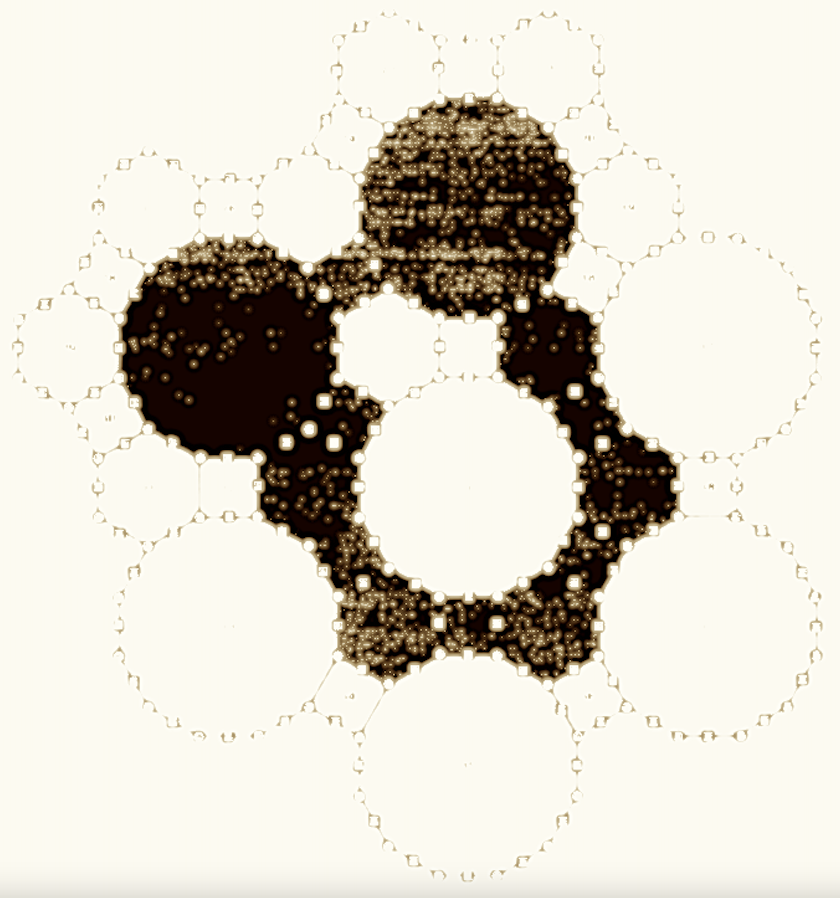I doodle. Sometimes I elaborate my doodles, rarely I implementish them. As with Art Project 1, I suspect there will be a series of these, thus the numeration. Here are some ideas from doodles and for doodles.
Doodle Abstract 1. Superlongtermism. A red dwarf star with a full-capture Dyson cloud of techne orbiting. Actually, a just-sub-red-dwarf. Some cloud elements are projecting light nucleus plasma beams into it to keep the fusion going under positive control. Maybe it’s not a cloud, but an actual Dyson sphere, situated to provide a 1 g surface. The sphere captures all the star’s material output, recycling any light nuclei for fusion and retaining the heavier nuclei as a resource. The main material resource is the original stellar system, which has been re-assembled as the sphere, with any remaining atoms stored in a slag planet and its moons, and an ore planet and its moons. Any interstellar material traveling through is captured as a resource. In the far future this could be the motivation for war.
Doodle Abstract 2. Annealed Oulipo. For several co-authors, each author writes each paragraph of the same paper according to the rule. The papers are submitted to a rarity checker, and a ranked choice vote is taken of what the best rare words are. These are then required to be used in the final paper. The rewriting process requires each co-author to be assigned their share of parallel paragraphs, their task being to anneal them together, possibly producing 1 to 3 paragraphs, but including all the concepts and any required rare words. This becomes the rough draft. Then some method of passing the document through the hands of each of the co-authors at least once is used.
Doodle Abstract 3. Finite Tilings of Spherical Surfaces. The Platonic solids as avatars of the regular tilings, for the surface of a sphere rather than the infinite Euclidean plane. Definitely periodic. OTOH, you can randomly populate the surface of a sphere with vertices, and then fiddle with them until they are very nearly equidistant. With 4, 6, 8, 12, 20 vertices this will (probably provably) evolve to the Platonic solid vertices. With other numbers would you get the equivalents of the uniform tilings etc.? With yet other numbers could you set things up so that there are two different classes of equidistant points, either at the same distance even though there are two classes, or two different distances, etc. Or perhaps rational number distances only, optimizing for standard deviation and maximum deviation somehow. Would you get situations where each distance and therefore edge and therefore tile is different, or would you have subsets of equal lengths? An aperiodic tiling of an infinite number of tiles whose geometries vary according to some rule.
Doodle Abstract 4. Peer Reviewed Paragraphs. Citizen (and Establishment) microknowledge. They would have the equivalent of DOIs, and AIs would be constantly searching the available literature for paragraphs and sentences thereof easily transformable to the DOI version. If every artist is a thief, every sentence is a plagiarism. This is a mechanism to organize the data and the implications so that the wealth can be spread around justly.
Doodle Abstract 5. AI Old Pictures. Scan a bunch of decorative alphabet letters and engravings and such from old books. Use these as your training data for prompt-driven image derivations. Analyze them down to the splines, so you can manually or algorithmically optimize and tweak them.




